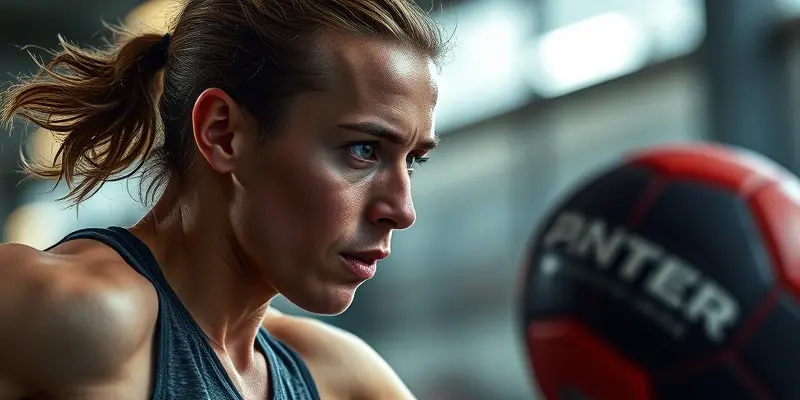The Prime Playbook: Recovery & Injury Lessons from Deion Sanders for Every Athlete
In sports, setbacks are a guarantee—but so is the possibility of a stronger comeback. Whether you’re lacing up sneakers for the first time or chasing your next personal best, injury prevention and recovery are essential to your fitness journey. Want to know how the best in the game do it? Let’s dive into the remarkable story of Deion Sanders—an athlete whose career teaches us how to bounce back, adapt, and thrive.
Lessons from Deion Sanders: A Blueprint for Resilient Recovery
Most know Deion “Prime Time” Sanders for his dazzling NFL and MLB careers. But what’s just as impressive is his longevity, versatility, and ability to return to peak form—even after setbacks. Sanders is the only person to play in both a Super Bowl and World Series, an achievement grounded in disciplined recovery habits and mental resilience.
What can we learn from “Prime”? Sanders’ approach included:
- Cross-training for total body resilience—Switching between football and baseball minimized repetitive stress and allowed muscles to recover.
- Adaptive training cycles—He wasn’t afraid to step back, focus on healing, and come back stronger.
- Relentless mental discipline—Sanders set clear goals, visualized success, and used adversity as fuel, whether on the field or in his media career.
Evidence-Based Recovery Strategies (You Don’t Need to Be a Pro!)
You don’t have to be a Hall of Famer to benefit from these proven recovery principles:
Warm-Up & Technique
Start every session with 5-10 minutes of gentle warm-up (think dynamic stretches), followed by sport-specific drills. This boosts circulation and preps joints—reducing your risk of pulls and strains. Pay extra attention to proper form, even if you’re a seasoned athlete.
Progressive Rest & Gradual Return
Sprained an ankle? Pulled a muscle? Take it slow. Use the “progressive rest” method:
- Phase 1: Active rest (gentle movement—walking, light stretching)
- Phase 2: Low-impact exercise (swimming, cycling, bodyweight moves)
- Phase 3: Gradually reintroduce your regular workouts, increasing intensity only when pain-free
Nutrition Essentials for Healing
What you put on your plate matters as much as what you do in the gym. Prioritize:
- Protein (chicken, tofu, beans) for muscle repair
- Vitamin C (citrus, berries) for tissue healing
- Vitamin D & calcium (calcium for bone strength) for bone health
- Anti-inflammatory foods (leafy greens, fatty fish, nuts)
Sample Daily Recovery Routine
- Morning: Gentle stretching (10 minutes), high-protein breakfast
- Afternoon: Low-impact activity (such as cycling, 20 minutes)
- Evening: Foam rolling (5-10 minutes), balanced meal with veggies and lean protein
Tools & Gadgets: Modern Recovery Made Simple
You’ve seen the pros with all the gear—turns out, many tools are accessible for home use:
- Foam rollers and massage balls: Help break up muscle knots and speed up recovery.
- Compression sleeves/boots: Boost circulation and reduce post-exercise swelling.
- Monitoring devices: Wearable tech can track your activity and ensure you’re not overdoing it during rehab.
Pro tip: Always start with gentle pressure and gradually increase as your muscles adapt. Use these tools consistently—after intense sessions, not just when you’re already sore.
Mental Motivation: Turning Setbacks into Comebacks
Physical recovery is only half the battle; your mindset matters just as much. Deion Sanders is famous for turning adversity into motivation—the same skill that helped him transition from the field to the broadcasting booth and then to a top college coaching role. How can you harness this?
- Set small, measurable goals (e.g., walking without pain, regaining full range of motion)
- Visualize your success—imagine yourself back in action stronger than ever with visualization for healing
- Build your community—enlist workout buddies, coaches, or online groups for advice and encouragement
Remember: You’re not alone. Even pros need support.
Long-Term Takeaways: Make Recovery Your Competitive Edge
If Sanders’ journey proves anything, it’s that lasting athletic performance isn’t about never getting injured—it’s about how you recover and adapt. Listen to your body. Prioritize recovery days. Know when to rest, and don’t rush the process. Injury is a chance to learn about your limits, build new habits, and come back with greater resilience.
Conclusion: Your Recovery Roadmap
Every athlete’s story features challenges. What sets champions apart is their approach to recovery. Follow these evidence-based tips, embrace tools designed to help, and keep a positive, patient mindset. Your best performance still lies ahead—if you give your recovery the “Prime Time” attention it deserves.
Stay strong, stay healthy, and remember: Recovery is where greatness grows.
Written by [Your Name], Fitness & Health Expert, Lead Writer at GymPulse Club

